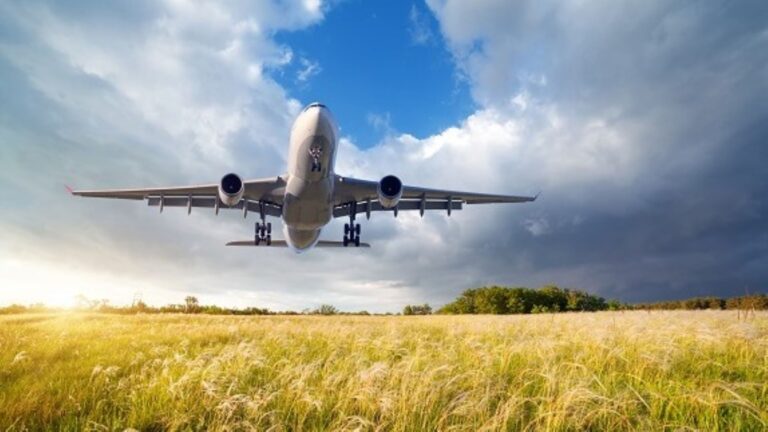
While the aviation sector talks a big game on net zero, the gap between stated ambition and policy-backed action remains stark. New research from financial think tank Carbon Tracker suggests that, with the regulatory framework currently favouring a limited solution in Sustainable Aviation Fuel (SAF), airlines are doing little to advance scalable, zero-emission technologies.
The industry’s reliance on SAF has become a central plank of its green narrative. Airlines and manufacturers routinely highlight commitments to making their fleets “100% SAF-compatible,” suggesting a smooth path to decarbonisation. But, in reality, that path is narrow, bumpy – and, possibly, a dead end.
SAF limitations
Around 95% of SAF on the market today is derived from Hydroprocessed Esters and Fatty Acids (HEFA), made from waste oils and animal fats. Yet these feedstocks are finite and in demand in other use cases. While SAF production may double in 2025, it will still represent a marginal fraction of aviation fuel demand. Other SAF variants raise additional concerns: crop-based fuels bring environmental trade-offs such as biodiversity loss, while synthetic e-SAF remains prohibitively expensive – up to seven times the price of conventional jet fuel.
Despite these limitations, SAF has received disproportionate policy support. The UK and EU have both introduced SAF blending mandates, and the UK government has committed £63 million to SAF-related projects. While such initiatives may deliver a marginal reduction in emissions from today’s aircraft, they fail to address the long-term challenge: how to eliminate aviation emissions entirely.
Zero-emission flight: Underfunded and overlooked
In contrast to SAF, truly transformative technologies such as electric, hydrogen, and hybrid propulsion, are being sidelined. According to Carbon Tracker, fewer than 800 new propulsion aircraft were ordered globally between 2021 and 2024, compared to more than 14,000 conventional jet aircraft. Neither Airbus nor Boeing currently have firm orders for zero-emission aircraft, and their R&D budgets suggest little urgency to pivot.
Policy has done little to correct this market failure. Unlike the automotive sector, where zero-emission vehicle (ZEV) mandates have accelerated innovation and adoption, aviation faces no equivalent pressure to shift investment into cleaner propulsion. Targets remain vague, timeframes unambitious, and funding insufficient to spark real change.
“The emphasis on ‘SAF-compatible’ aircraft is to some extent being used to maintain a social licence to operate, similarly to the gas industry’s promotion of “hydrogen-ready boilers”.” suggests Rich Collett-White, Carbon Tracker Analyst and report lead-author.
Policy gaps and missed opportunities
The weakness of current aviation legislation lies not only in its SAF-heavy focus but in its failure to apply the levers that have proven effective elsewhere:
- Lack of technology mandates: No zero-emission aircraft targets exist at national or EU levels.
- No dedicated R&D grants for clean propulsion: Most public investment goes toward SAF production or efficiency upgrades for fossil-fuel aircraft.
- Poor transparency: Airlines and manufacturers are rarely required to report R&D allocation or emissions pathways in detail.
As Rich Collett-White of Carbon Tracker puts it, SAF commitments are being used to “maintain a social licence to operate,” echoing the “hydrogen-ready boiler” narrative used in the domestic heating sector to delay the transition from fossil gas.
Demand growth: The elephant in the terminal
The Carbon Tracker analysis specifically considers the role for zero-emission technologies in aviation decarbonisation but, in our consideration of sector legislation one area to highlight is the government’s endorsement of aviation growth that stands in direct tension with its climate goals.
Several major airport expansion plans – including those at Heathrow, Gatwick, and Bristol – have recently been approved or advanced, increasing future capacity despite the legal obligation to achieve net zero by 2050. In this context, policymakers may need to confront a difficult but necessary question: can unchecked growth in air travel ever be compatible with climate targets?
A serious policy framework must consider demand-side measures, such as capping airport expansion, taxing frequent flyers, or adopting stronger “polluter pays” principles – ensuring that environmental costs are borne by those contributing most to the problem.
Smarter regulation is needed
If aviation is to decarbonise at the pace required, legislation must go beyond SAF. That means setting clear targets for zero-emission aircraft adoption, mandating transparency in capital allocation, and investing public funds where they can drive real innovation. It may also require rethinking the UK’s Jet Zero strategy to prioritise long-term viability over short-term optics.
For liquid fuel distributors, the evolution of SAF presents both a challenge and an opportunity. But policymakers must ensure it is not a substitute for deeper structural change. As battery-electric and hydrogen technologies inch closer to commercial readiness, now is the time to review the legislative mix to deliver a much-needed thrust towards zero-emission flight – before aviation’s climate ambitions are permanently grounded.
The Carbon Tracker is a not-for-profit financial think tank that seeks to align capital markets with climate reality.
The full report “Awaiting Take Off” is available here: https://carbontracker.org/reports/awaiting-take-off/
Image credit: iStock
